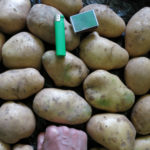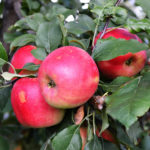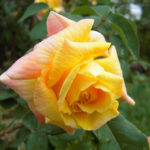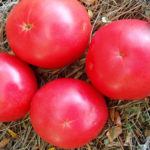Rose Kronenbourg
For many years, controversy has not ceased about this rose. For some, she seems too pretentious, someone calls her divine. One way or another, but this variety will not leave a single rose grower indifferent. It still remains in demand and relevant, as hybrid tea forms with two-tone colors are returning to fashion. We are talking about the beautiful Cronenburg rose.
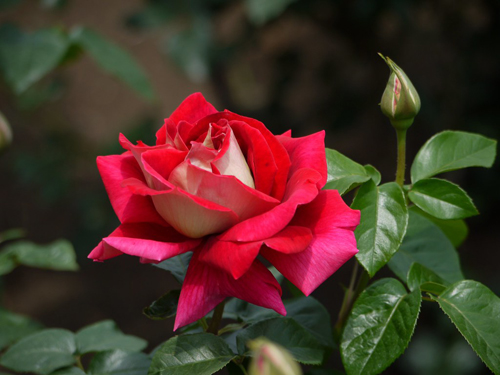
History of creation
Our heroine is the brightest offspring of the famous all over the world Gloria Day, and refers to sports, that is, to varieties that have arisen as a result of a mutation of the main variety. It was such an unusual mutation that Gloria Day (also known as Peace) discovered and isolated in 1963 and isolated by the Irish, later New Zealand breeder Samuel McGredy IV (Samuel Darragh McGredy IV). In Ireland, the new form is announced as Flaming Peace. In 1966, Treloar Roses Pty Ltd presented a striking novelty in Australia as Kronenbourg. The rose was registered under the same name. Unique letter code МАСbo. Many rose growers do not really agree that the beauty was given the name Cronenburg. And the point here is not that this is the name of the German city, but that Kronenbourg is a beer brand. According to flower growers, the name Flaming Peace is much more suitable for a bright flower, which maximally reflects the passionate appearance of a beautiful rose.
Description
Cronenburg belongs to hybrid tea varieties, a distinctive feature of which is a slender, erect bush with good branching and a strong frame. The usual height of a perennial is 100 - 120 cm, but often it can grow up to 150 cm. The crown width is about 100 cm. The shoots are powerful, strong. Thorns are large, infrequently located, young shoots are practically without thorns. The foliage is good. Leaves are odd-pinnate, rich green, of medium size, the blade is elongated-oval, with a jagged edge and a glossy surface. Smooth, tall shoot ends with a single flower. Thanks to this, the variety can be successfully used as a cut. Very rarely, an inflorescence is formed at the end of the shoot, consisting of 2 - 3 buds.
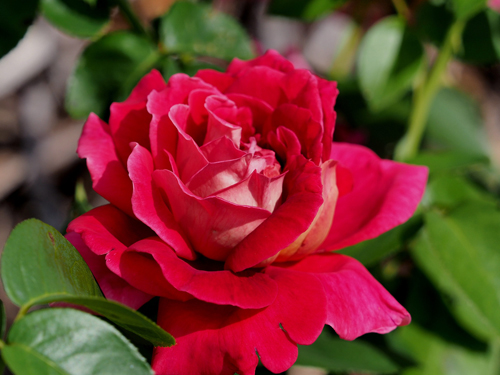
The bud is conical in shape, yellow-orange on the outside. But when the rose begins to open, the inner red-crimson color of the petals adds a bright accent color to the overall range, creating a rather striking contrast. The rosette is densely doubled, consisting of 50 petals with a velvety surface. The size of the rosette is large, usually 12 - 13 cm. When opened, the flower takes the form of a lush rosette. Some flower growers at this moment compare our heroine with a Kustodiev merchant's wife, or with a lady in an expensive crimson velvet dress with yellow lining. Yes, perhaps this beauty is excessive, but it's not for nothing that the second name of our heroine is the Burning World, because it is impossible not to admire the rose, it is so attractive. In addition, at different periods of opening the rosette, the color of the petals changes: yellow-orange can change to almost white with pink blotches, and crimson turns purple or violet-lilac. This changing color is called "reverse".
Flowering period
Cronenburg belongs to the multi-flowering varieties. The decorative perennial blooms in the second decade of June; in the south, bud formation lasts until the onset of the first frost. Florists note 2 flowering waves, the break between which is often quite pronounced. Flowering cannot be called very abundant, but the shrub is always covered with bright flowers, which are in different stages of dissolution. The number of buds growing depends on the quality of care and the correct planting site. The decorativeness of the rosette does not last as long as the rose growers would like. According to some reports, the flower retains its freshness and decorative appearance for only about 4 days, sometimes up to a week or even a little more. The aroma is soft, pleasant, well expressed. Its strength depends on many factors: temperature and humidity, time of day.For example, it was noted that the smell is much more intense in the morning than during the day. The faded rosette loses its turgor, the petals become like rags, which makes the flower rosette look sloppy. Of course, at this stage, the flower needs to be pruned to keep the perennial's spectacular appearance at its highest.

Characteristics
- The Cronenburg rose blooms the next year after planting, but these will only be single flowers. But after a year, culture is able to show its inherent decorativeness;
- frost resistance is very good, corresponds to USDA zone 6 (a system adopted by the US Department of Agriculture). The perennial is able to withstand winter temperatures down to minus 23.3 ° C. But according to the observations of flower growers, comfortable wintering without shelter is possible at temperatures up to minus 17.8 ° C, which corresponds to zone 7. In the presence of a standard shelter, the variety easily winters in zone 4, at temperatures up to minus 34.4 ° С;
- the immunity is average. Our heroine in favorable years is resistant to black spot and powdery mildew. But if the summer turned out to be wet and cool, then without preventive treatment it can easily suffer from a fungal infection;
- this rose is very attractive to pests. Most often, troubles are caused by aphids, leafworm, scale insects, thrips, rose leafhopper and rose sawfly;
- resistance to rain is average, although many growers note the flower's resistance to high humidity. True, during the period of prolonged rains, the buds can rot and die off without opening;
- the color is generally stable to the sun, but in extreme heat, the edges of the petals melt. In addition, the culture does not tolerate dry periods;
- the long and sturdy stem allows the rose to be used as a cut variety.
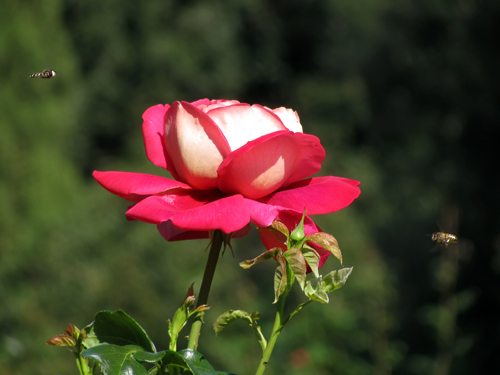
Agrotechnics
The favorable period for planting passionate Cronenburg is autumn, although seedlings can also be planted in spring, however, in this case, they will require more careful care. A heat-loving culture requires the most illuminated place, the only exceptions are the southern regions, where the plant prefers diffused partial shade, in which it develops and blooms beautifully. Our heroine does not like strong winds and drafts, but prefers a light breeze, which will help to quickly dry the foliage in case of rainy weather. To maintain decorativeness, the shrub needs nutrients, therefore, at least 2 - 3 times during the growing season, the culture is fed with universal fertilizers. In cool regions, the shrub needs shelter. And if a young plant can be bent to the ground in the fall, then the shoots of an adult bush become very strong and do not bend. In this case, the root zone of the plant is mulched, unripe and non-flowering shoots are removed, flowering stems are shortened, the bush is covered with several layers of non-woven material, for example, lutrasil. In the spring, do not rush to completely remove the shelter, do it gradually, since our heroine is sensitive to return frosts.
As experts say, the breed is really felt in the Cronenburg rose, it's not for nothing that it is the offspring of the great Gloria Day who conquered the world. Many rose growers accepted the defiant and catchy beauty of our heroine and rightfully consider her a favorite in the garden, setting aside the most ceremonial places for planting. And there is something to love this velvet beauty for - the shrub is neat, the flower rosettes are large, and the color combination is simply fantastic. And in care, the plant cannot be called very capricious. True, it is not so easy to find a worthy companion for a beautiful rose, since all eyes will be riveted only on it. The culture looks great in a single planting, many growers plant several bushes at once to achieve an even greater decorative effect. Despite the large number of rave reviews, there are also negative ones.Yes, it just so happens that with someone our heroine does not want to take root, she is often sick, weakly blooms. In such cases, you just need to carefully study the information about the variety, understand what it needs and what it is worth protecting it from.
Our heroine also has a descendant resulting from the mutation of her kidney. This is a climbing shape and it is called Kronenbourg CI. It was discovered in 1973 in India by Kasturi Rangan. The shrub of this sport is quite tall and spreading. The height of the variety reaches 500 cm, and the width is 250 cm. The flowers are terry, consist of 26 - 40 petals, the diameter is rather large - about 12 cm. The shape of the flower is similar to a lush rosette with a raised center. Coloring - red-yellow reverse. The aroma is moderate.
